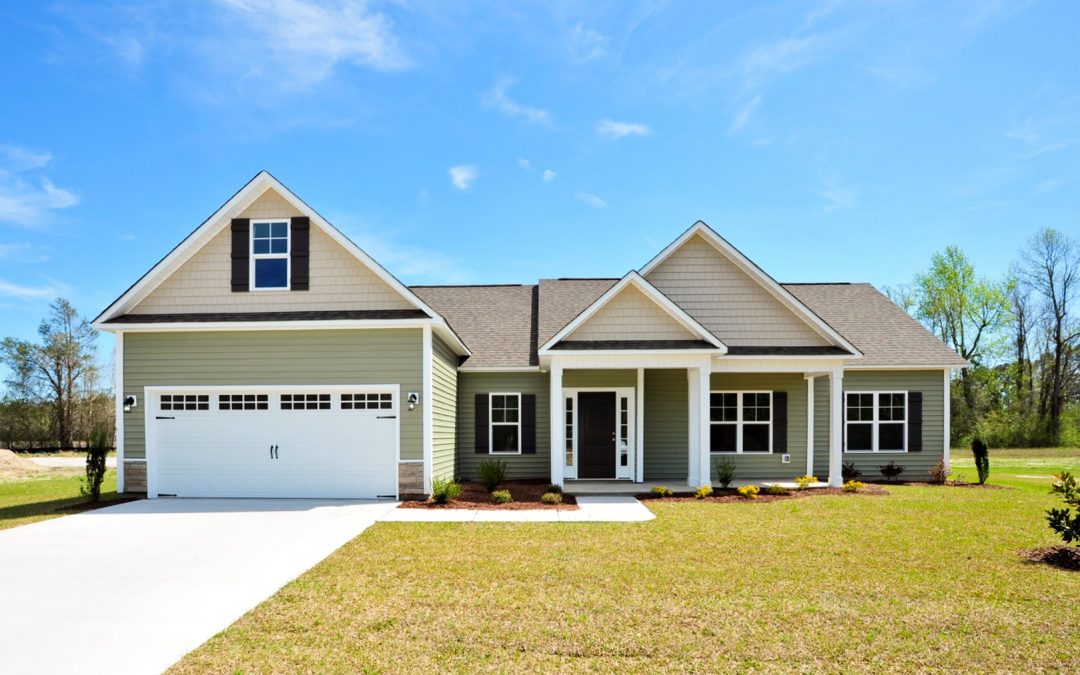Every structure reveals signs of aging over time. If you see slight imperfections in your home over the years, don’t stress. They are a natural and unavoidable part of the home’s aging process. We’ll explain why these imperfections happen, give examples of normal wear and tear, and list some regular maintenance tasks that will help keep your home in great shape.
What Happens to a Home as Time Passes?
Exposure to the Elements
Daily exposure to the sun and other factors like wind and rain can cause minor damage to your home’s exterior. This will eventually lead to blemishes and may require paint touch-ups or minor repairs. This is expected over time.
Settling
Settling is a naturally occurring process that happens when the ground under a home shifts or compacts under the weight of the structure. Every home settles over time.
Expansion and Contraction
The building materials in your new home are subject to seasonal changes in temperature. These changes in temperature can cause materials like wood and concrete to expand in the heat and contract once cooled.
The whole home undergoes these physical changes. The combination of expansion, contraction, and settling will cause normal wear and tear on your home as time passes.
Here Are Some Examples of Normal Wear and Tear:
- Faded paint
- Slight cracks where the wall and ceiling meet
- A slight lifting of baseboards
- Nail pops (a nail starting to push through the drywall)
- Drywall seam lines may become visible
- Cracks or separations in grouting
- Shrunken or cracked caulk
- Sticking doors
- Sidewalk cracks
Normal Use of Your Home May Lead to:
- Cabinet and vanity scratches
- Worn carpet or other flooring
- Loose door hinges
- Lightly scuffed floors
- Other signs of use
Not all homes will experience the same types or levels of wear and tear, but all homes will experience some wear and tear. Time, weather conditions, regular maintenance and care are variables that contribute to the maturing of your home.
Regular Maintenance Tasks for Your Home
To keep your home looking its best and prevent small problems from turning into large ones, regular maintenance is required. Here are some steps you can take to extend the longevity of your home.
Indoor Home Maintenance
- Check appliance and fixture care instructions to be sure you’re cleaning and maintaining them correctly and often enough. Check your home’s water heater, HVAC, refrigerator, stove, dishwasher, washing machine, dryer, etc.
- Clean dryer exhaust vent regularly.
- Ensure you’re using the right cleaning method for your type of counters and flooring.
- Wipe down counters daily.
- Clean floors weekly or immediately after a spill.
- Deep clean carpets yearly.
- Check caulked areas around tubs, sinks, thresholds, countertops, etc. annually and repair as needed.
- Change HVAC filter each month, they don’t need to be expensive filters. TIP: Set Amazon to auto-ship.
- Replace smoke/carbon dioxide batteries yearly. TIP: Pick an easy day to remember like New Year’s Day.
Outdoor Home Maintenance
- Inspect caulk, weather stripping and sealants around doors, windows, exterior vents, piping, etc. each year and repair or replace as needed.
- Keep shrubs trimmed away from the home to prevent scratches in your home’s siding.
- Power wash your siding if you notice pollen, mildew, or algae build up. This is especially important in North Carolina.
- Prepare your home for season changes by cleaning gutters, getting furnace and fireplace inspections, and checking for drafts/installing weather stripping as needed.
- Wash windows every season or at least twice a year.
- If your driveway ices in the winter, use sand instead of salt. Salt can damage concrete.
- Keep downspouts pointed away from your foundation.
A home provides your family with shelter, security and peace of mind. Maintaining and caring for your home’s interior and exterior will help it age gracefully and stay beautiful for years to come.
If you’re looking to become a new homeowner in Eastern North Carolina, let us know. We’ll walk you through every step of the process.

